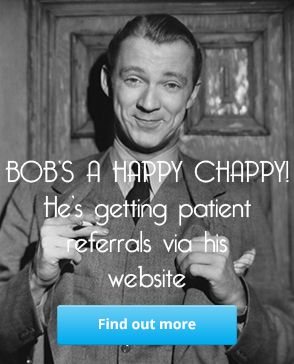Addressing Viewer Personas On Your Website
-
Written on Wednesday, September 17, 2014 by Geoffrey Cooling
Different Groups of People Have different Needs
I have spoken before about buyer personas and how I thought that concept was valid for use in website design. I used the term viewer personas and talked about three general segmentations. The researching for a loved ones, the new to this whole things and the experienced users. It is common for marketers to endeavour to address different personas with marketing messages. We are trying to take those people into account in our website design process.
The Why
Psychology is a very powerful thing, if you understand even part of the psychology behind someone and their actions it gives you a very powerful edge. It is clear that the psychology, the wants and needs of the three personas are different. Their level of understanding of the process will also be very different as will the catalyst for their research. With this understanding, I think that it is imperative for us to attempt to address them differently. To address them in a way that is suitable for them, that answers their questions and meets their wants and needs.
The How
If you are undertaking a traditional marketing campaign, you can design elements that will cater to differing personas and use channels that will best touch them. If you are undertaking smart online marketing campaigns, using PPC, you can design advert copy and associated landing pages that help you cater to those personas. But what about your website, how can you cater to those personas on your website? One size copy and content will not fit all, it would be quite attractive to us if we could set a path and then control each viewer persona through that path. We have attempted to design that concept into the home page of our website builds. One example, although it is four viewer personas, can be seen at www.hearbright.com
By adding very prominent elements to the top of the front page of the site, we hope to guide each viewer persona to a page that meets their needs and wants. A page that addresses the underlying psychology of their search and engages them in a way that builds motivation for them to do business with the Practice. We hope that in this way we can begin to address the differing buyer personas on every website that we build. The pathway on hearbright.com will continue to evolve as we add more elements of that journey to the website over time. You need to understand that it is in fact a pathway you are trying to build, one that leads a viewer to a destination, in our case, a new Patient.
Planning The Path
If we look at any sales process there is usually a clear strategy to be undertaken, although that strategy in concept is linear, it hardly ever is in practice. My sales trainer always spoke about the ladder of aims, where a sales process was broken down into a series of aims that resulted in the desired end result. In essence, that is the thinking that we are trying to bring to website design. With this concept in mind, we will try and envision and plan out the best pathway to our desired goal for each persona.
Using different elements we will then try to guide each viewer persona through their planned pathway. Hey, everything is good in theory, but we all know that delivering in the wild is another thing entirely. However, we will plan it implement it, test it, plan it, implement it, test it ad-infinitium until we see the results we would like. I think that it can be done and done relatively well, it won’t work for every single visitor to your site but it should help you guide and engage a majority.
Guiding A Majority
I think if you can guide a majority of your site visitors through a pathway that is designed to suit their psychology, wants and needs. It can only increase your engagement of your viewers and encourage more conversions from viewers to appointments. That is in fact what we are all after, your website is a valuable tool, but only if you decide to use it as such. Practices who don’t will fall behind, in the market that we exist in right now that means death.

